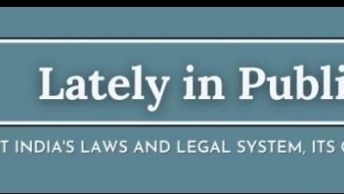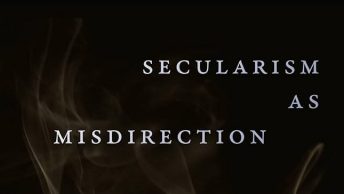This is a belated commentary on the series of studies on the relationship between caste and economic discrimination in the Indian urban labor market conducted by Sukhdeo Thorat, Katherine Newman and others that was published last month in a freely available special issue of EPW. The studies are fairly comprehensive and include a number of pieces of evidence, both objective and subjective, that presents a compelling and complex picture of social reality in the marketplace. The first of the five papers presents an overview of the topic, the authors’ findings, their meaning, implications and a very limited discussion of remedies. The second and third papers provide an insight into a variety of perceptions of employers and students at several universities in Delhi regarding questions pertaining to merit assessment, reservation policy, caste discrimination, job prospects, income expectations and other related matters. The fourth paper presents the findings of a study of communal and caste-based discrimination in screening job applicants. The fifth and last publication studies caste discrimination in the urban salaried sector using data from the National Sample Survey. The first three of these largely detail subjective views of participants and are easy on the lay reader; the last two comprise of statistical analyses whose quantified outcomes are more authoritative and constitute the backbone of this entire set of studies. Popular accounts of their findings can also be found in media reports which appeared at the time (a link to a news item in Yahoo!India is here).
The purpose of this post is not to provide an exhaustive account of their findings, reasoning and conclusions – that would be impossible in a short write-up given the numerous observations they make at every stage. Instead, I simply highlight here a few key findings and my own views on them. In a nutshell, these are: (1) Employers universally claim that they do not discriminate on caste grounds, that such discrimination, whether done out of individual prejudice or to comply with a state mandate are undesirable. By non-discrimination, they generally mean a policy that is caste-blind but a few employers instead follow a conscious policy of caste balancing. A variety of stereotyping is also, at the same time, widely prevalent and employers see nothing wrong in holding such views. (2) Reserved (i.e. dalit) and general category (i.e. non-dalit) university students have differing preferences, expectations and understanding of the marketplace. General students prefer private sector jobs, have higher salary expectations, disfavor caste-based quotas, are more willing to employ family-based or other connections, exhibit greater confidence in their own abilities and are less perturbed by unjust hiring practices of employers. Reserved category students prefer public sector jobs, have lower salary expectations, favor quotas, are less likely to employ family-based or other connections and are generally more sensitive both to perceived slights by employers as well as to unjust hiring practices. (3) Amongst young men with stereotypically identifiable caste-specific or distinctive surnames, those from an upper caste are more likely to obtain an interview for an entry-level job than a similarly qualified dalit or Muslim applicant. (4) SC/STs suffer a 15% wage differential as compared to others who are equally qualified; job discrimination occurs in both public and private sectors but reservation policies compensate for it in the public sector to some extent. A large part of the earning differential is attributable to factors other than discrimination collectively called ‘endowment’ such as education attainment, level of occupational skill, etc.
The authors discount employers’ claims of equal treatment in light of all the other evidence and suggest that they probably understate the bias in hiring. They argue that antidiscrimination laws are needed to ensure truly caste-blind policies and a government organization similar to the Equal Employment Opportunity Commission that monitors caste data routinely is required for this purpose. An interesting theory suggested by one of the managers interviewed is that globalization imposes a pressure that competitively favors companies adopting more ‘broad-minded’ and equitable merit-based selection policies. Hence, he argued, companies that are more globalized are less likely to adopt caste, family or other identity –based hiring practices, the latter being more prevalent in smaller firms catering only to the local market. The authors did not comment on this beyond stating it perhaps because this study presented no evidence in support of such a contention. Rather, stated preferences of employers regarding preferential hiring of people who are ‘cultured’, ‘stylish’, etc. as well as student assessments of employer expectations suggest that globalization, by favoring particular cultural attributes – socio-cultural capital, as the authors call it – more prominently associated with the urban and upper caste segments of society may actually be prejudicial to people coming from a lower caste or rural background.
The disparity between reserved and non-reserved categories of students in terms of expectations and preferences together with evidence of actual wage and job discrimination suggests that a relationship likely exists between these trends. This is one aspect where I found these papers lacking. It is suggested that employer expectations confer a premium on certain extracurricular traits that dalit students lack rendering them less competitive when they graduate and are about to enter the job market. They speculate that awareness of this fact causes a crisis of confidence and leads to pessimism which accounts for their lowered expectations. Yet, this does not address the key question that arises: do differing preferences account for the wage and job discrimination or does it work the other way around? This is particularly important to the conclusions of their last study as there is no real way, applying the methods they use, to distinguish between lowered expectations and discrimination (see paper V by Madheswaran and Attwell for details).
I also found the variety of reasons students cited in support of continuing reservations interesting. Barring one instance, all the others were about everything save caste, the primary basis of state-mandated quotas – poverty, rural background, absence of access to exclusive social networks or other implications of the same such as ‘family background’ suggestive of a lack of affluence.
Their study showing discrimination at the preliminary stage of inviting applicants for interviews is strongly suggestive of caste and communal prejudice in hiring. This is not altogether surprising knowing the opinions expressed in their managers’ survey. In fact, it is likely that a variety of other discriminatory characteristics – regional, linguistic, etc. will also come to the fore if one were to only look for them. On a dissenting note, many of the factors such as stereotyping and discriminatory hiring that they disparage may actually be beneficial to the well-being and growth of businesses, particularly in traditional markets, notwithstanding the arguments of mainstream economic theory – apart from offering cultural cohesion, hiring people of specific caste backgrounds may help smaller businesses better address the requirements of their relatively caste-specific clientele. The authors too note in their introductory article that labor market discrimination can be quite durable. They quite naturally root for non-discriminatory practices, particularly a legal and policy framework to safeguard employment opportunities of marginalized sections of society in the private sector. This might well require a high degree of intrusive regulation to enforce and I am not sure how feasible it would be for small and medium-scale enterprises. From a policy perspective, it would therefore be important to know whether such tendencies are equally common in large industrial houses and medium to small scale family-based ventures – the former appear to be facing the brunt of governmental pressure to introduce affirmative action policies. Future studies may throw more light on this.






In my opinion one of the most interesting viewpoints has been relegated to a footnote in these papers. It is that, under certain circumstances discrimination may be economically rational (first note of fourth paper). In fact the fewer resources an employer has to determine the true merit of a candidate, greater is the reliance on statistical discrimination (as opposed to individual credentials). However, if discrimination is economically rational but socially unacceptable then there is a greater case for regulation.
Dear hs,
Thanks for the comment and my apologies for the delayed reply. As they say in the footnote, there are two competing theories that they elaborate on some more in the background of that paper (under the heading ‘Caste and Communal Exclusion in India’ and ‘Hiring, Favoritism and Social Exclusion’). One, as you point out, is that an economic rationale exists because that is the only way to detect true merit; the other that discrimination is the outcome of competition for jobs amongst various groups that they say is the approach that they root for in the paper. The footnote explained what they also noted in the main background, namely, theories regarding why ‘an economically irrational phenomenon such as caste discrimination persists in a modern economy’. Interestingly, they made little effort to connect the background theories to the evidence they collected even in a speculative manner in the discussion. The evidence per se does not appear to support either of these. Similarity of applications does not necessarily control for true merit as what employers are looking for is something additionally such as the various attributes employers talked about in the survey (paper III) that are not to be found in written applications. The possibility of statistical discrimination cannot be ruled out. Their argument would possibly be that the companies they looked at are operating in a modern economy where the limitations of a more traditional market do not presumably operate, discrimination would be an economically irrational choice and the social exclusion hypothesis is much more attractive.
Is this socially unacceptable? People of a particular caste bringing other people of the same caste to work with them is neither unknown nor unheard of. It is in fact common practice all across the country. It is however politically unacceptable where social equity is being increasingly identified with caste balancing.